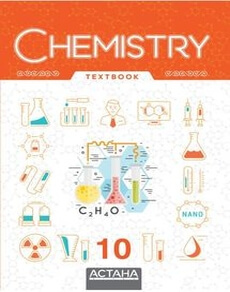Chemistry Baikenov K. - 10 класс - ХИМИЯ

| Предмет: | Химия |
| Класс: | 10 класс - ХИМИЯ |
| Авторы: | Baikenov K., Khassen T., Zhumagulov N., Kaliyev D., Yussupov O., Samatov A., Tor A. |
| Год: | 2019 |
| Язык: | Английский |
| полную версию можно, после Авторизации или Регистрации | |
Добро пожаловать на i-book.kz – ваш источник удобных учебников для десятого класса! электронные учебники, выпущенные на казахском в 2019 году, облегчат учебный процесс. Забудьте о тяжелых рюкзаках с книгами и тетрадями – теперь учебник Химия Baikenov K., Khassen T., Zhumagulov N., Kaliyev D., Yussupov O., Samatov A., Tor A. доступен онлайн на устройствах под управлением Android и iOS, в форматах EPUB и EPUB3. Читайте где угодно и как удобно! С нашими учебниками вы можете делать пометки и выделять текст, выбирая читалки или браузеры. Приложения для Android и iOS, а также Readium для Chrome и Firefox, позволяют удобно читать на смартфонах, планшетах и компьютерах. Мы также предлагаем учебники в формате PDF. Присоединяйтесь к i-book.kz и откройте новые возможности обучения! Здесь знания становятся доступными, а учебный процесс – комфортным и увлекательным. Сэкономьте время и силы, выбирая электронные учебники на i-book.kz.
Contents
Preface
1. Structure of an atom
1.1 Atom. Average atomic mass
1.2 Radioactivity
1.3 Electron levels and sublevels
1.4 Electron configuration
Questions and Problems
2. Periodicity
2.1 The pattern of changing the properties of elements in
periods and groups
2.2 Acidity and basicity properties of inorganic compounds
2.3 Trends in the redox properties of compounds in periods
and groups
Questions and Problems
3. Chemical bonds
3.1 Chemical bonds
3.2 Hybridization of orbitals
3.3 VSEPR theory
3.4 Intermolecular bonds
Questions and Problems
4. Stoichiometry
4.1 Basic stoichiometric laws of Chemistry
4.2 Mole conception. Molar concentration
4.3 Percent purity of substances. Limiting reagents
4.4 Yield of chemical reaction
Questions and Problems
5. Introduction to Thermodynamics
5.1 Internal energy and Enthalpy
5.2 Solving problems: Internal energy and enthalpy
Practice work №1
5.3 Hess's law
5.4 Entropy
5.5 Gibb's energy
Questions and Problems
6. Kinetics
6.1 Rates of reaction
6.2 Effect of concentration. Rate expression
6.3 Effect of temperature: Vant-Hoff rule and Arrhenius
equations
6.4 Catalysts
Questions and Problems
7. Equilibrium
7.1 Chemical equilibrium
7.2 Factors affecting equilibrium. Le Chatelier's principle
7.3 The equilibrium constant expression
Questions and Problems
8. Redox reactions
8.1 Oxidation-reduction processes
8.2 Standard reduction potential
8.3 Electrochemical cells
8.4 Electrolysis
Questions and Problems
9. Analytical methods
9.1 Analytical methods in modern research
9.2 Chromatography
Lab work №1
Questions and Problems
10. Halogens
10.1 Halogens and their properties
10.2 Chemical properties and preparation of halogens
10.3 Hydrogen chloride. Hydrochloric acid
10.4 Halides. biological role of iodine. Uses of halogens and
their compounds
Lab work №2
Questions and Problems
11. Alkaline earth metals
11.1 Alkaline aerth metals and their properties
11.2 Important compounds of alkaline earth metals.
Carbonates
Lab work №3
Practice work №2
Questions and Problems
12. Organic Chemistry
12.1 Introduction to Organic Chemistry
12.2 Homologous series and functional groups of Organic
Chemistry
12.3 Isomerism. Lab work №4: Molecular models of organic
compounds
12.4 Alkanes. Chemical properties of alkanes
12.5 Cycloalkanes
Questions and problems
13. Unsaturated hydrocarbons
13.1 Alkenes
Lab work №5. Qualitative analysis of unsaturated
hydrocarbons
13.2 Structural and stereoisomers of alkenes. Preparation of
alkenes
13.3 Chemical properties of alkenes
13.4 Polymers
13.5 Alkadienes
13.6 Alkynes
13.7 Petroleum
Questions and Problems
14. Haloalkanes
14.1 Haloalkanes. Preparation of haloalkanes
14.2 Environmental effects of haloalkanes
14.3 Reactions of nucleophilic substitution of haloalkanes
14.4 Elimination reaction of haloalkanes
Questions and Problems
15. Alcohols
15.1 Classification of alcohols
15.2 Preparation of alcohols
Demonstration №1
15.3 Chemical properties of alcohols
15.4 Phenol and its properties
Questions and Problems
Answers
Glossary
Hazard warning symbols
Appendix A. Standard electrode (reduction) potentials at 25oC
Appendix B. Standard thermodynamic values for selected
substances at 25oC
Appendix C. Valencies of common ions
References